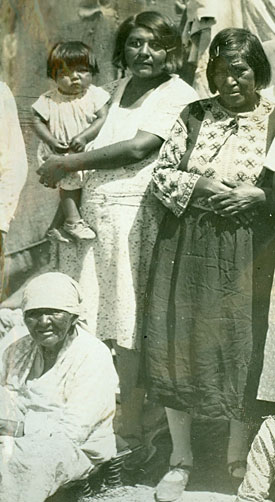The Timbisha Shoshone had few illusions about Death Valley. They knew where water sources could be found and where edible plants grew. They were familiar with the habits of bighorn sheep, rabbits, and other wildlife they hunted. The Timbishas' knowledge allowed them to live in an arid land that rarely saw visitors.
Small groups camped regularly at desert water sources. There were summer camps in the Panamints and other mountain ranges. From the raw materials of the desert they fashioned the tools of survival. Theirs was a life of subsistence and simplicity.
The arrival of European-Americans forced the Shoshone to change. They provided labor and knowledge in exchange for money to buy food and manufactured goods. The Shoshone later provided baskets and other items to tourists.
By the 1930s the Timbisha, shuffled aside when Death Valley became a National Monument, were confined to a small village south of Furnace Creek. Tribal efforts to obtain federal recognition met with success in 1983. In 2000, congressional action provided for a 7,800 acre land trust the Timbisha could legally call home.
Today, the Timbisha Shoshone are active partners with Death Valley National Park in preserving the land they have always called their homeland.











